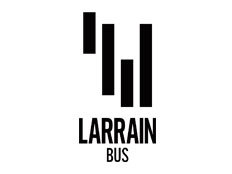A well-structured URL makes it easier for search engines to understand the content of your page. Page speed can be impacted by many factors, such as redirects, image quality, CSS and JavaScript files, etc. To learn about your page speed performance, check out Google’s Page Speed Insights to better understand your mobile and desktop performance. E-E-A-T is an acronym coined by Google that stands for Experience, Expertise, Authority, and Trust. While it’s not a direct ranking factor, the quality of E-E-A-T helps Google determine if the content can be trusted. Don’t want to come up with blog titles or keyword targets on your own?
- Keyword research, site speed optimization, crawlability, and content audits can all be part of the on page SEO process.
- So even if you’ve written an informative post, but haven’t used your subheadings properly, few people will find your article on search engine result pages.
- Internal links are a great way to keep the reader on your site.
- Search engines, like Google, love fresh and updated content that’s helpful.
- Off-page SEO focuses on optimizing signals that occur outside your website, such as building backlinks and establishing a social media presence.
Make Sure Your Site Is Mobile-Friendly
That’s because schema markup gives AI models more information about your page. High-performing SEO campaigns contain both short and long-tail keywords — and the terms you choose to target will depend on your business and goals. Use clean, organized URLs — like the first example above — to improve your site’s architecture and help you rank higher in relevant search results. On-page SEO differs from off-page SEO, another term you’ll likely encounter when trying to boost your online rankings.
Which site ranks highest for a specific search term is primarily based on a website’s content. That’s why your content should be informative, easy to read, and focused on the right keywords that your audience uses. You should perform regular content audits using SEOBoost to assess and maintain content’s relevancy and ranking in search engine results. To keep your content current and ranking well, it should be regularly enhanced with the latest data, fresh images, and the integration of relevant long-tail keywords. A tool can help you transform video content into blog posts, monitor keyword rankings, or conduct content research with unique data visualizations.
Tool #9 – Google Analytics 4
This will make sure the content easy on the eye and easy for a reader to work their way through. Google actively tracks user behaviour on your site through tools like Google Analytics 4, Google Chrome and the Google SERPs. Improving it won’t only lead to more organic traffic but can also lead to higher conversion rates. Google wants their users to have a great experience visiting your site. The key is to make sure the main entities in your content are obviously linked together.
Optimize on-page SEO in 8 steps
Choose keywords with a large search volume so that you don’t waste money on keywords that don’t drive traffic. They will influence users and increase your clickthrough rate (CTR). You’ll attract more people that are interested in your business by optimizing your tags. There are many factors that search engines take into consideration SEO Anomaly when ranking your site. In fact, 83% of Internet users expect a website to load in three seconds or less!
